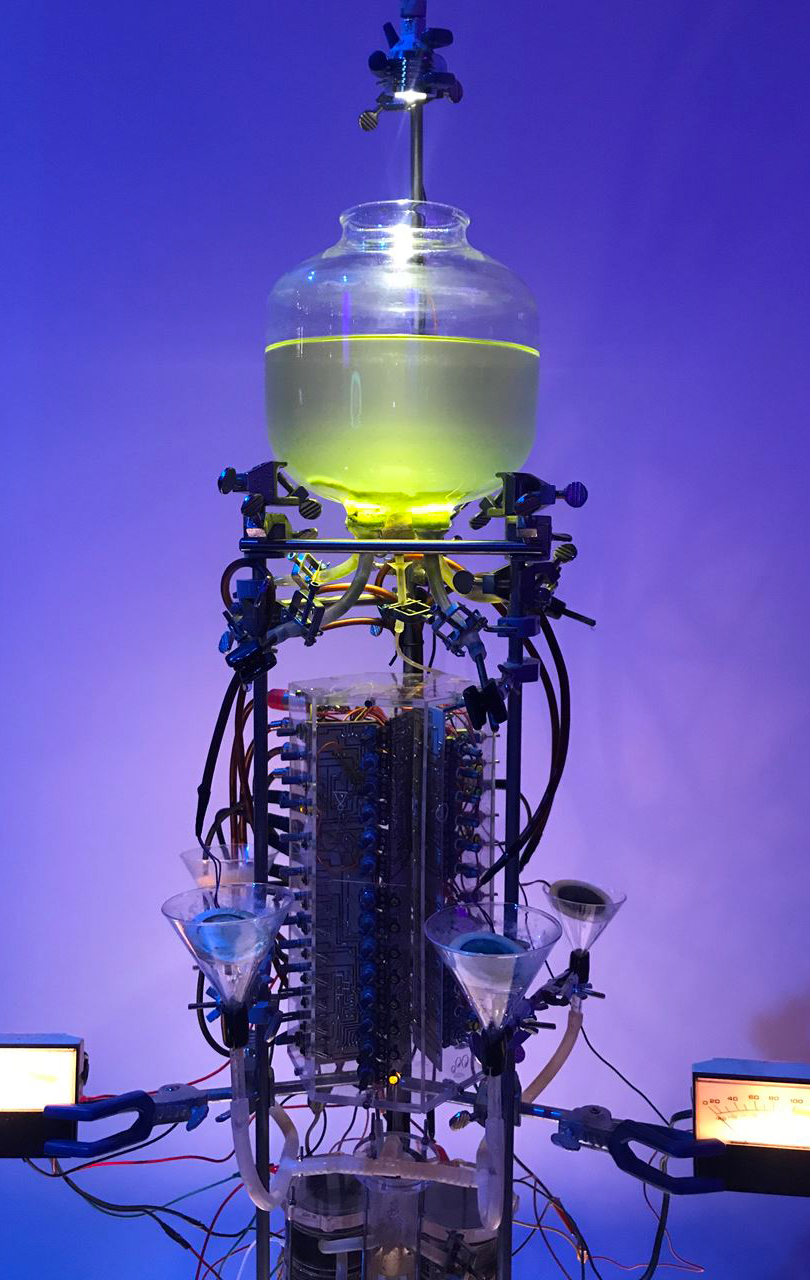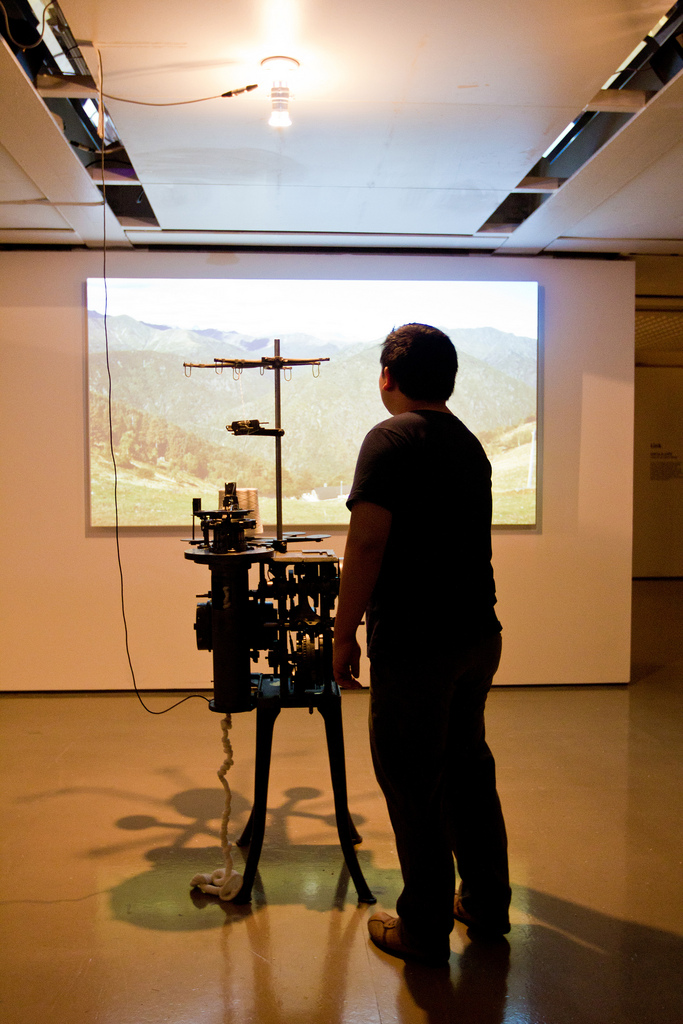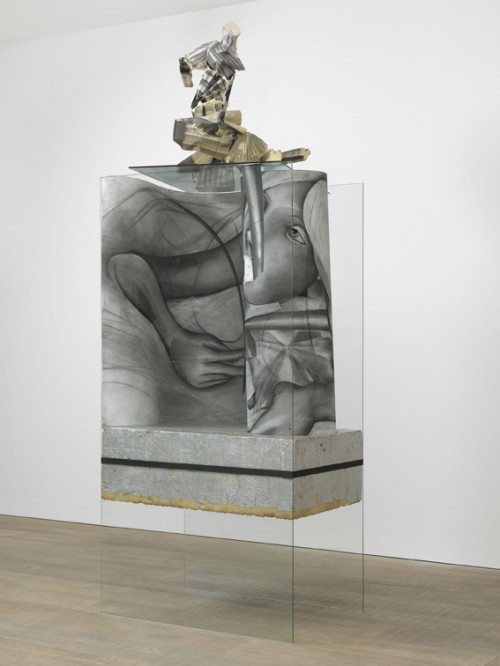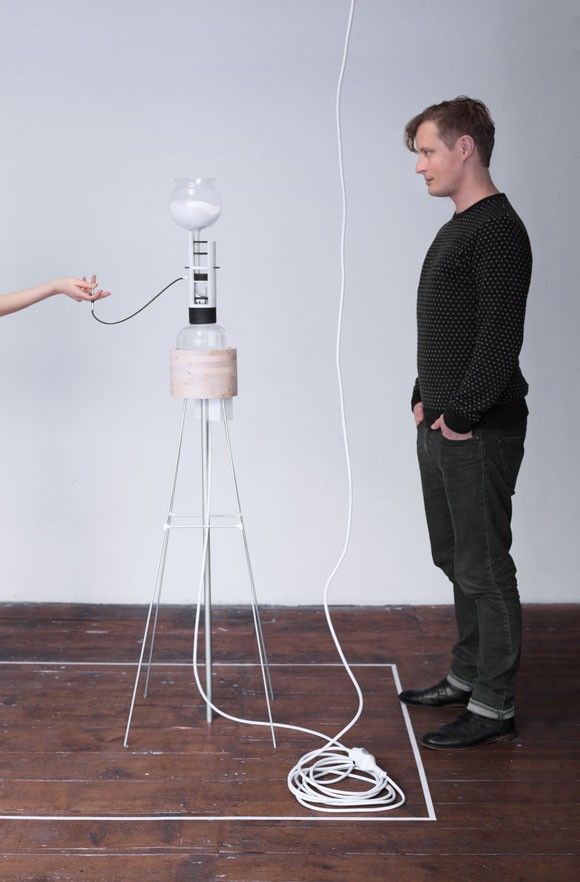


Glosopeda
Glosopeda
Barbara Lanzarote, Rachel Lamot, Kim Rosario
.
The Ontology that Never Was
Glosopeda herontdekt het verleden vanuit een neotoekomstig perspectief. The Ontology that Never Was herschept een archeologische context in zijn natuurlijke omgeving waarin wordt ingegrepen door digitale materialisatie, en doet denken aan de visie van Gavin Lucas op de materiële wereld als een archief van het proces van (de)materialisatie: de spanning tussen de krachten van het verzamelen van materialen en artefacten en de tegengestelde kracht van verspreiding. De ontologie van de objecten versus de verspreiding, uitwissing en verplaatsing van hun oorspronkelijke setting.

Driessens & Verstappen
Breed
Breed (1995-2007) is a computer program that uses artificial evolution to grow very detailed sculptures. The purpose of each growth is to generate by cell division from a single cell a detailed form that can be materialised. On the basis of selection and mutation a code is gradually developed that best fulfils this “fitness” criterion and thus yields a workable form. The designs were initially made in plywood. Currently the objects can be made in nylon and in stainless steel by using 3D printing techniques. This automates the whole process from design to execution: the industrial production of unique artefacts.
Computers are powerful machines to harness artificial evolution to create visual images. To achieve this we need to design genetic algorithms and evolutionary programs. Evolutionary programs allow artefacts to be “bred”, rather than designing them by hand. Through a process of mutation and selection, each new generation is increasingly well adapted to the desired “fitness” criteria. Breed is an example of such software that uses Artificial Evolution to generate detailed sculptures. The algorithm that we designed is based on two different processes: cell-division and genetic evolution.

Gilberto Esparza
BIOSONOT
BioSoNot consiste en el desarrollo de una serie de configuraciones de artefactos sensibles que recojen datos que interpreta en frecuencias audibles, que se activan con aguas contaminadas y que traduce la actividad biológica de microorganismos y los niveles de contaminación de distintos rios en sonido.

Neri Oxman and MIT Develop Programma
Aguahoja
La variedad de formas y comportamientos exhibidos por estas piezas refleja la forma en que se expresan en la naturaleza, donde un material como la quitina puede componer tanto el exoesqueleto de los crustáceos como las paredes celulares de los hongos. A diferencia del acero y el hormigón, los materiales compuestos formados por estos materiales están en constante diálogo con su entorno. Algunos artefactos exhiben cambios dramáticos en la conformación en respuesta a la humedad y el calor, mientras que otros se oscurecen o aligeran a medida que cambian las estaciones. Algunos son frágiles y transparentes con una textura vítrea, mientras que otros permanecen flexibles y resistentes como el cuero. A pesar de su diversidad emergente, estos artefactos comparten una calidad común: en la vida, sus propiedades están mediadas por la humedad; en la muerte se disocian en el agua y regresan al ecosistema.

Quadrature
Positions of the Unknown
At the very beginning of space exploration the infrastructure to monitor the whole sky was not yet developed. So in order to find out whether foreign countries launched objects, the US government started to train citizens to observe and detect possible artificial satellites. Scattered over the allied world, these amateur scientists played a crucial part in keeping track of all men-made technology orbiting earth, until “Operation Moonwatch” was discontinued in 1975 […] “Positions of the Unknown” locates the current whereabouts of these mysterious objects by simply pointing at them as they revolve around Earth. Missing the legal proof, those unidentified artefacts remain entities of pure speculation, secret companions of us and our planet. Even so they have been sighted several times and their ubiquitous presence is therefore somehow validated, they linger in a state between existence and non-existence. Quadrature’s 52 small machines constantly follow their paths and serve as silent witnesses of the unknown.

Juliana Mori & Matteo Sisti Sette
timeLandscape woolrhythms
“timeLandscape – wool rhythms” 2010. Part of timeLandscape series, 2009 – 2010. Video, audio, projector, speakers, custom patch (PD-Gem), sensor, wool engine. Variable dimensions and duration, loop. “timeLandscape – woolrhythms” is an interactive audiovisual installation in which a landscape is depicted from its multiple time possibilities and [re]composed through users’ real time interaction. The installation was developed in Biella, Italy, an area economically attached to textile industry, and deals with the cyclical perception of time and human, linear, interference on it. It gathers nature and artefact, by connecting a physical wool engine to digital imagery of daily cycles. By turning the wheel crank, users generate movement starting the engine. Through a sensor attached to the machine, software calculates the rotation speed, altering parameters for mixing audio and video fragments in real time. Every turn of the machine leads to different time thread combinations in response to the rhythm and speed of each interactor.

Rowan Smith
dot matrix loop
Rowan Smith’s work takes the form of a multidisciplinary semiotic investigation into the ways in which cultural signs and signifiers can be read as artefacts. He examines how the meaning embedded in these artefacts fluctuates (and frequently deteriorates) in relation to ever-shifting sociopolitical contexts; often assuming a self-critical position which responds to his locality.

MATTHEW MONAHAN
ماثيو موناهان
마태 복음 모나한
マシュー・モナハン
Matthew Monahan’s work presents a futuristic archaeology. Drawing from a wide range of influences, from Modernist art to ancient totems, Monahan’s ‘artefacts’ are both familiar and strange. Filtering historical mythologies through his own personal system of reference, altered further through the experience of making, Monahan’s work alludes to a contemporary spirituality, where beauty and brutality coalesce as virtual monuments.

Jasna Dimitrovska
Three Machines on Transparency
Three Machines on transparency is a project that is imagined as an “exhibition by appointment” where the artist guides the audience throughout the gallery installation. The machines represent artefacts that “do” philosophy or prototypes that materialize ideas. By demonstrating their functionality the artist synthesizes philosophical concepts into the corporeality of the physical prototypes.